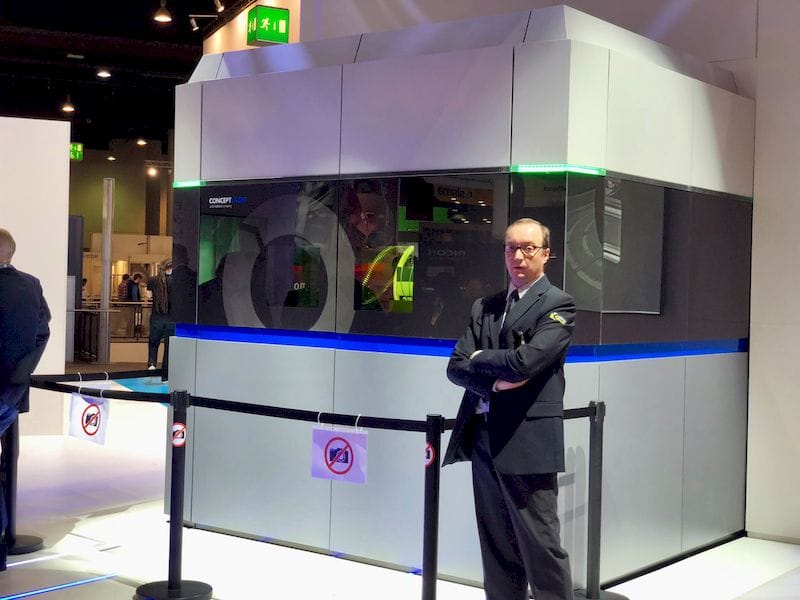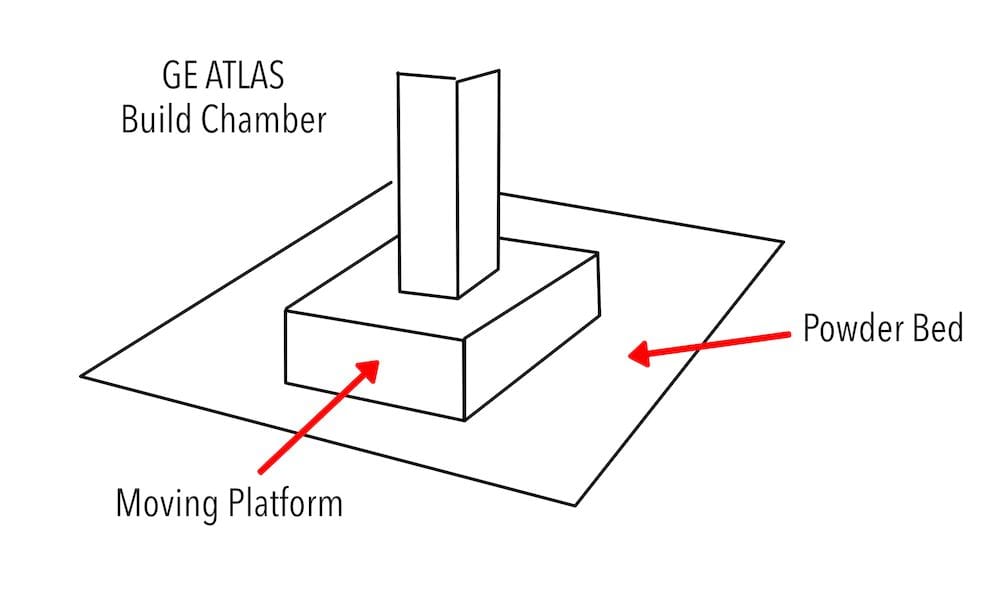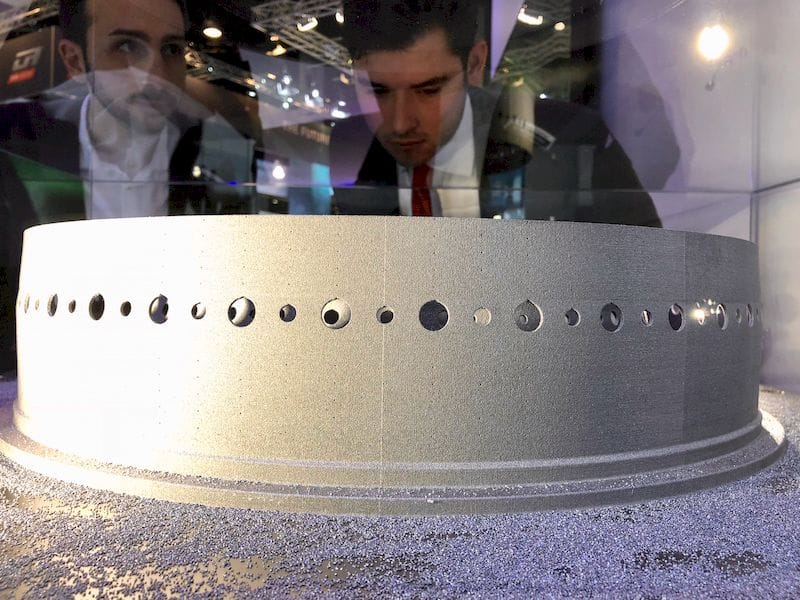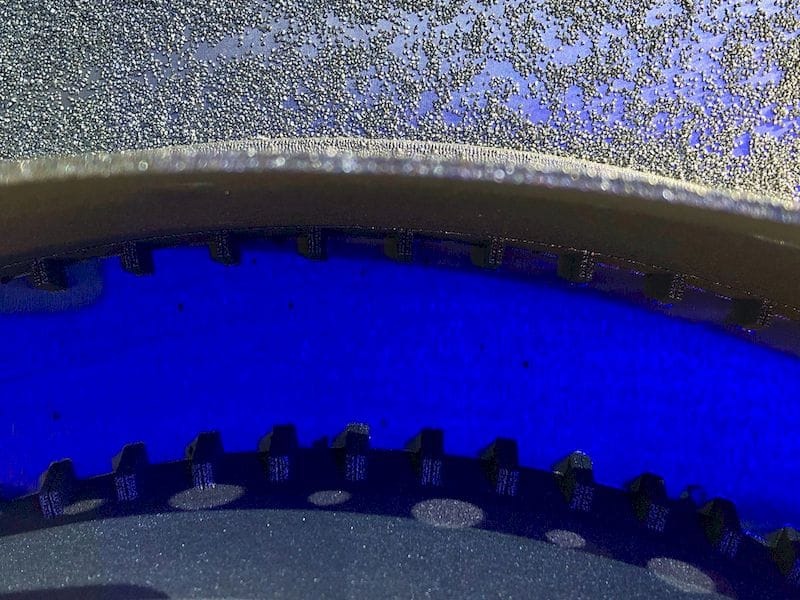
At Formnext we were able to take a good look at GE’s mysterious Atlas project.
It seems to be a somewhat different approach to 3D metal printing than is employed by their freshly acquired two 3D printer manufacturer subsidiaries, Arcam and Concept Laser, both of whom, coincidentally, showed their wares in the same exhibition stand.
But it was the Atlas that drew the most attention, and not only because of its significant size.
It’s a 3D metal printer, but that’s about all the GE will say about the device. They definitely did not want any images taken of the machine, particularly the innards, as you can see in the image at top. Yes, the gruff German security guard was giving us the eye while we snapped this pic.
The machine shown is actually a demonstrator, as GE desires to show off its new 3D metal printing concept. Production versions, they explained, could be scaled up to much larger build volumes. This one, however, was capable of 3D printing metal objects to 1100 x 1100 x 300mm, which is certainly large as far as 3D metal printing goes.
We were not allowed to take pictures of the inside of the machine, but we could take a look at it. I’m reproducing a rough sketch of what I observed and then draw some conclusions from it, as GE declined to explain pretty much anything about how the system works.

The machine appeared to have a rather large flat plate that was vertically mounted. This plate was moving slowly across the surface of the print bed, which as I said was quite large. There was no evidence of lasers being fired or reflected from above.
This configuration suggests that they’ve somehow mounted the lasers in a vertical arrangement on this moving platform, which then fires down on the powder surface. It’s also possible that there is a mirror arrangement that speeds the laser movement within the volume of the platform. If this is the case, then they’ve essentially made a kind of moveable 3D metal printer that can attack zones of the powder bed in sequence.
We were told the Atlas process is “similar to a 1000W process”.
It was unclear how the subsequent layers of powder are added, but it’s possible it somehow comes out of the platform as well.
This configuration could indeed be very scalable. Just add more of these moving platforms and increase the powder bed size. I suppose this could be grown to any size required eventually.

The quality of the parts produced by the Atlas system seemed quite impressive. Very fine details were produced, so small they were hardly visible.
GE representatives explained they believe the new Atlas concept could produce 5X better repeatability for the production of metal parts, which would make the machine even more attractive for certain industries.

GE was quite mysterious about the pricing of the system, which to be fair would be variable as it seems the system is quite customizable. However, we were told it was “under USD$10M”, which doesn’t really say much. Speculation among several observers suggested the real cost of the 1.0 x 1.0 x 0.3m system might be around USD$2.5M or so.
Regardless of the price, GE explained that several systems had already been installed at customer sites. This led to some confusion on my part, as it became unclear whether this system is an official product or not. Evidently “Project Atlas” is the name of the project, not the name of the system itself, as it is currently an unnamed machine.
Regardless of what it is called or how much it costs, however, the nature of this system concept is quite powerful. It appears that GE has developed a system that could in the very near future be 3D printing very large, highly complex metal parts for a number of industries.
Via GE Additive

